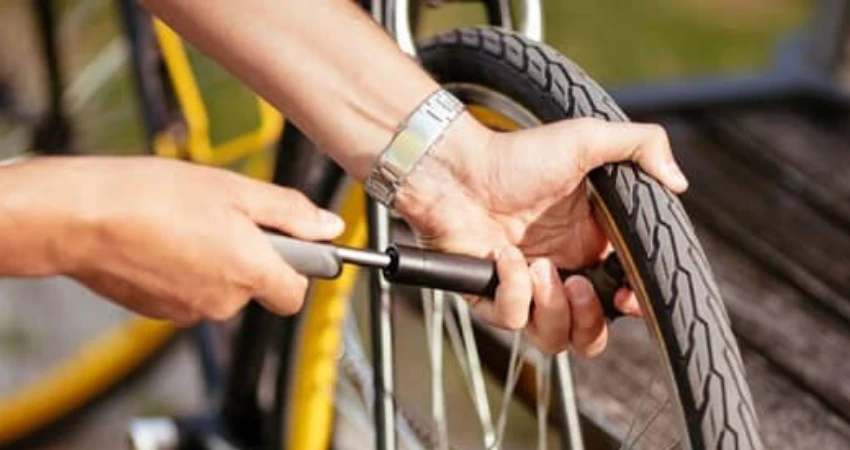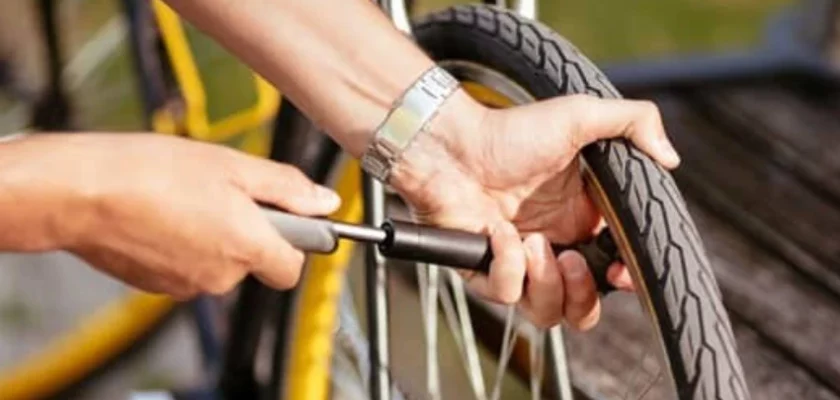Removing a bike pump without losing air can often be a frustrating task. Many of us have experienced the aggravation of carefully inflating our bike tires, only to lose all that precious air in the process of removing the pump. But fear not! In this blog article, we will explore a simple yet effective solution to this common problem.
In the following paragraphs, we will delve into techniques and tips that will allow you to remove your bike pump without losing any of the air you worked so hard to pump into your tires. Say goodbye to the exasperation of watching your tires deflate right before your eyes and hello to a seamless and hassle-free experience.
So, if you’re tired of losing air every time you remove your bike pump, read on to discover the secrets of how to remove the pump without losing air.
Efficiently Remove Bike Pump – No Air Loss!

Riding a bike can be a fun and healthy way to get around, but it’s not without its challenges. One common issue that cyclists face is the task of removing a bike pump without losing air from the tire.
It can be frustrating to spend time inflating your tires only to have all that effort wasted when removing the pump. Luckily, there are a few simple techniques you can use to prevent air loss and ensure a smooth ride.
Why Do You Lose Air When Removing a Bike Pump?
Before we dive into the techniques, let’s first understand why air loss occurs when removing a bike pump. The main reason is the difference in pressure between the pump and the tire.
When you attach the pump to the valve and start inflating, air travels from the pump into the tire, increasing the pressure inside the tire. However, when it’s time to remove the pump, the pressure inside the tire is higher than the atmospheric pressure outside. This difference in pressure causes air to rush out, resulting in a loss of air from the tire.
Techniques to Remove a Bike Pump Without Losing Air
Holding the Valve Closed
- Before removing the pump, use your thumb or finger to press the valve stem down, closing the valve tightly. This action prevents air from escaping when you detach the pump.
- Maintain this pressure until the pump is completely separated from the valve. This technique is effective for Schrader valves, commonly found on mountain bikes and hybrid bikes.
Using the Presta Valve Locking Mechanism
- Presta valves, often found on road bikes, have a small locking mechanism at the top. Before attaching the pump, ensure the valve is in the unlocked position by unscrewing it clockwise until it stops.
- When removing the pump, make sure to screw the valve back down clockwise until it is tightly closed. This action prevents air from escaping and ensures a secure seal.
Removing the Pump Rapidly
In some cases, removing the pump quickly can help minimize air loss. Once you’ve finished inflating the tire, swiftly detach the pump from the valve by pulling it straight off. This method requires a bit of practice to get the timing right, but it can be effective in reducing air loss.
Using a Pressure Release Valve
- Some bike pumps come with a built-in pressure release valve. Before removing the pump, engage the release valve to equalize the pressure inside the pump and the tire.
- This action prevents air from rushing out when detaching the pump, as the pressure has been equalized. If your pump has this feature, it can be a convenient solution for avoiding air loss.
Tips to Minimize Air Loss
While using the techniques mentioned above, there are a few additional tips you can follow to further minimize air loss when removing a bike pump:
- Inflate the tire to the correct pressure: Overinflating the tire can lead to more significant air loss when detaching the pump. Always check the recommended tire pressure and ensure not to go beyond it.
- Don’t over-tighten the pump: When attaching the pump to the valve, make sure it is securely connected, but avoid over-tightening. Excessive tightening can damage the valve and make it harder to remove the pump without losing air.
- Check for leaks: Before removing the pump, inspect the valve and connection point for any signs of air leakage. If you spot a leak, address it before detaching the pump to prevent unnecessary air loss.
- Consider using a quick-release valve adapter: Quick-release valve adapters can make removing the pump easier and reduce air loss. These adapters replace the valve cap and allow for quicker detachment without losing air. They are compatible with both Presta and Schrader valves.
Frequently Asked Questions
1. How can I remove a bike pump without losing air?
To remove a bike pump without losing air, first, release the pressure by pressing the valve release button or unscrewing the pump head. Then firmly hold the pump head and twist it counterclockwise to detach it from the valve. This should prevent any air from escaping during removal.
2. Is it necessary to hold the valve while removing the bike pump?
For most valves, it is not necessary to hold the valve while removing the bike pump. However, it is recommended to hold the pump head securely and twist it gently to avoid any accidental air loss.
3. Can I remove the bike pump quickly without losing air?
To remove the bike pump quickly without losing air, make sure to release the pressure from the valve by pressing the valve release button or unscrewing the pump head. Then, swiftly detach the pump head from the valve by twisting it counterclockwise, ensuring a steady grip and avoiding any sudden movements.
4. If I accidentally lose some air while removing the bike pump, what should I do?
If you accidentally lose some air while removing the bike pump, don’t worry. Simply reattach the pump head to the valve and add more air if necessary. Make sure the pump head is securely attached and try to remove it again while following the proper steps to minimize air loss.
5. Are there any specific techniques to minimize air loss when removing the bike pump?
To minimize air loss when removing the bike pump, always release the pressure from the valve before removing the pump head. Ensure a tight grip on the pump head and twist it gently but securely counterclockwise. Following these steps will help to minimize any air loss during the removal process.
Final Thoughts
In conclusion, removing a bike pump without losing air can be achieved with a few simple steps. Firstly, ensure that the valve is closed tightly to minimize air leakage.
Then, release the pressure from the pump slowly and steadily, being mindful not to let the air rush out too quickly.
Finally, with a gentle twisting motion, carefully detach the pump from the valve, being cautious not to disturb the connection. By following these steps, you can successfully remove the bike pump without losing any precious air.
So, next time you find yourself in need of deflating your bike tires, remember the key phrase ‘how to remove bike pump without losing air’ and keep those wheels rolling smoothly.

